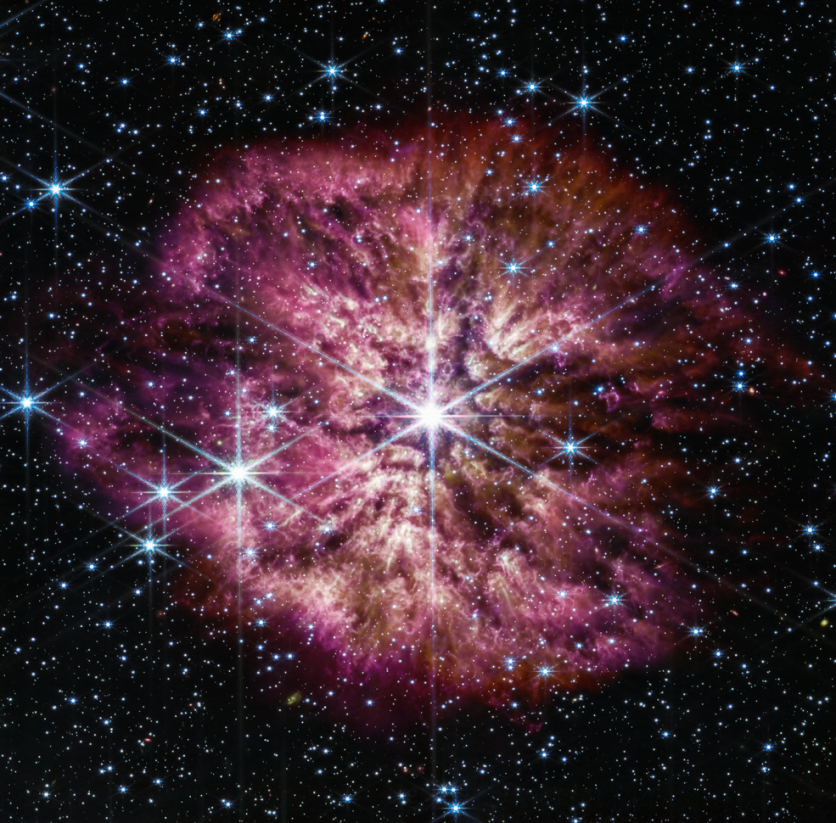NASA's James Webb Space Telescope just witnessed a beautiful cosmic death in a rare star!
The powerful telescope captured a rare image of a Wolf-Rayet star, which is one of the most massive, luminous, and briefly detectable stars known in the universe.
This observation was made in June 2022, and the star, WR 124, is located 15,000 light-years away in the constellation Sagitta. The infrared instruments of the Webb Telescope revealed unprecedented details of the star, which is shedding its outer layers, resulting in its halos of gas and dust.

Wolf-Rayet Phase
Massive stars go through their lifecycle at a fast pace, and only some of them enter the brief Wolf-Rayet phase before they become supernovae.
Therefore, the detailed observations of this rare phase provided by the Webb Telescope are valuable to astronomers. WR 124 is 30 times the mass of the Sun and has shed 10 Suns' worth of material so far.
Cosmic dust develops as the expelled gas cools and flows away from the star; this dust glows in the infrared light picked up by the Webb Telescope.
Astronomers are very interested in the genesis of cosmic dust, which may endure a supernova blast and contribute to the general "dust budget" of the cosmos.
According to NASA, cosmic dust plays a vital part in the evolution of the universe as it protects young stars, aids in the formation of planets, and offers a surface for molecules to assemble and cluster together, including the components of life on Earth.
Despite the importance of dust in the universe, current theories of dust formation cannot explain the abundance of dust present. Thus, the universe operates with a dust budget surplus.
Read Also : NASA James Webb Space Telescope's First Images Reveal Treasure Trove of Various Galaxies
Details of Cosmic Dust
The advent of Webb has opened up new possibilities for astronomers to study the details of cosmic dust, which can best be observed in infrared wavelengths of light.
Webb's Near-Infrared Camera ensures that the brightness of WR 124's stellar core is balanced with the intricate details of the surrounding gas, while the telescope's Mid-Infrared Instrument reveals the clumpy structure of the gas and dust nebula surrounding the star.
Before the Webb Telescope, dust-loving astronomers lacked the detailed information needed to investigate questions about dust production in environments such as WR 124, including whether the dust grains were large and plentiful enough to survive the supernova and become a significant contributor to the overall dust budget.
However, with the new data from the Webb Telescope, such questions can now be explored using actual data.
Stars such as WR 124 also provide an analog for astronomers to understand a crucial era in the early history of the universe.
Similar dying stars initially sowed the young universe with heavy elements forged in their cores, which are now prevalent in the current epoch, including on Earth.
The detailed image of WR 124 captured by the Webb Telescope captures a fleeting, tumultuous period of transformation, and holds the promise of future discoveries that will reveal the long-obscured mysteries of cosmic dust.

ⓒ 2025 TECHTIMES.com All rights reserved. Do not reproduce without permission.




